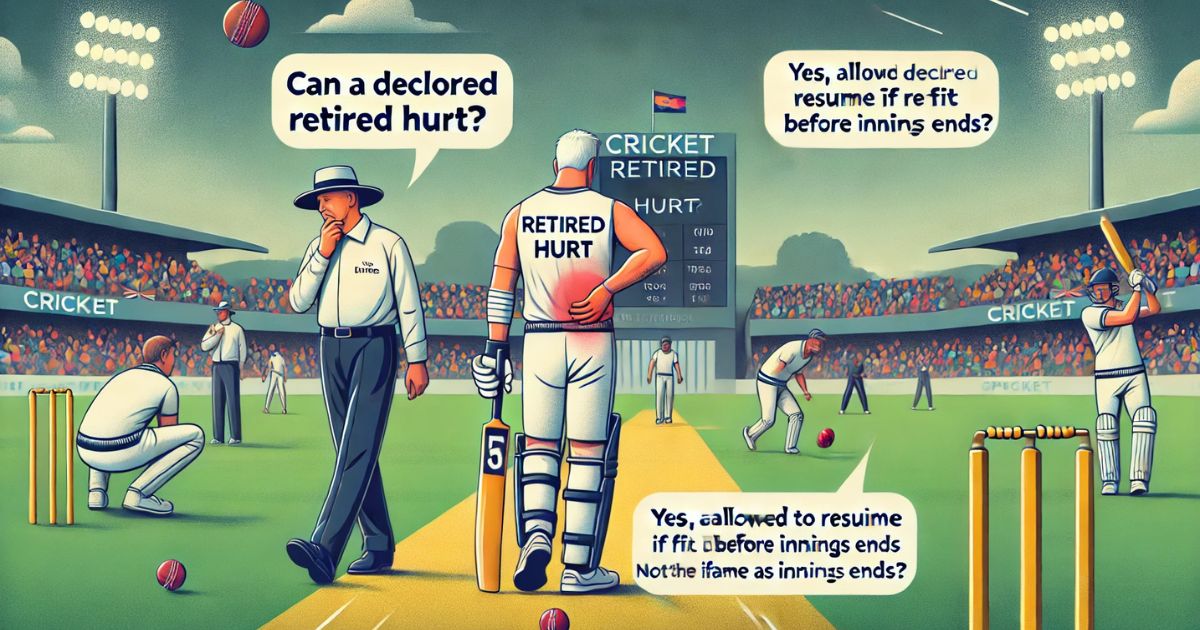In cricket, the term “retired hurt” refers to a situation where a batter leaves the field due to injury or illness during their innings. This provision ensures player safety while allowing flexibility in the game’s progression. A common question arises: can a player who has retired hurt return to continue their innings? The answer is yes, under specific conditions outlined in the Laws of Cricket.
Understanding “Retired Hurt”
According to Law 25.4.2 of the Marylebone Cricket Club (MCC) Laws of Cricket, a batter who retires due to injury, illness, or any other unavoidable cause is considered “retired – not out.” This status allows the batter to resume their innings later in the match, provided they are fit to do so and the innings has not concluded.
Conditions for Returning to Bat
A player who has retired hurt can return to bat under the following conditions:
- Recovery: The player must recover sufficiently from their injury or illness to resume play.
- Innings Continuation: The team’s innings must still be in progress. If the innings concludes before the player can return, they remain “retired – not out.”
- Batting Order: The player can return to bat only after the fall of a wicket or the retirement of another batter.
Statistical Implications
When a player retires hurt and does not return to bat, they are recorded as “retired – not out.” This status means the player’s innings is incomplete, but they are not considered dismissed. Consequently, their batting average is calculated without counting this innings as an out, potentially benefiting their overall statistics.
Real-Life Examples
Several instances in cricket history illustrate the application of the “retired hurt” rule:
- Michael Clarke (Australia): In December 2014, during a Test match against India, Clarke retired hurt due to a back injury after scoring 60 runs. He returned the next day to complete a century, demonstrating the rule’s practical use.
- Graham Thorpe (England): In 1998, Thorpe retired hurt with back spasms during a Test match against the West Indies. After receiving treatment, he returned to score a century, highlighting the rule’s impact on match outcomes.
Differentiating “Retired Hurt” and “Retired Out”
It’s essential to distinguish between “retired hurt” and “retired out”:
- Retired Hurt: The player leaves the field due to injury or illness and can return to bat later if recovered.
- Retired Out: The player voluntarily leaves the field for reasons other than injury or illness and cannot return to bat unless the opposing captain consents.
Conclusion
The “retired hurt” rule in cricket balances player welfare with the game’s competitive nature. It allows injured players the opportunity to recover and contribute to their team’s performance if circumstances permit. Understanding this rule is crucial for players, coaches, and fans alike, as it underscores the sport’s commitment to fairness and safety.










